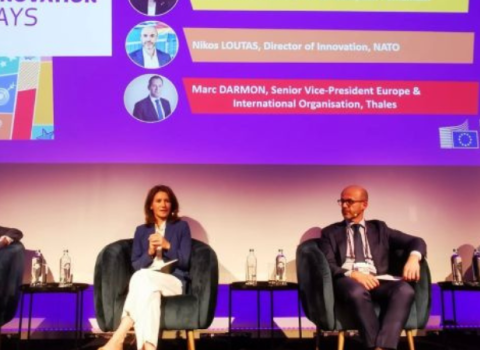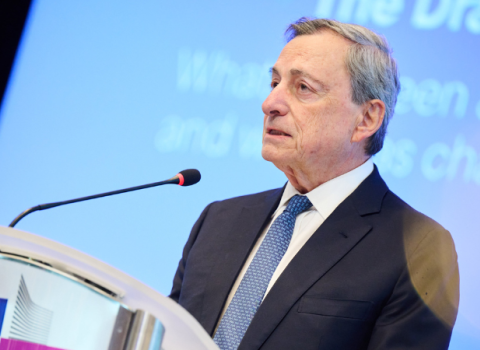In the face of competing demands, it is critically important that FP10 is not stretched thin but instead concentrates on what EU research programmes do best

Mattias Björnmalm, secretary general of university association Cesaer
As the EU faces mounting pressures and looks across its funding schemes to help address them, it is vital that the next framework programme is not pulled in different directions, but instead remains focussed where it will undoubtedly have the most impact: cutting-edge science and technology and research & innovation talent.
Against the backdrop of the risk that FP10 will be pushed towards ‘mission drift’ where it is over-encumbered and instructed to pursue new and tangential - or completely unrelated - objectives, CESAER, the group of science and technology universities of which I am secretary general, has today published six key design considerations to guide the development of FP10:
- Engage the knowledge value chain along the full research continuum;
- Put researchers and innovators in driving seat through open and competitive calls;
- Ensure predictable and stable conditions;
- Unleash synergies;
- Reinforce excellence and prepare for cooperation in context of EU-30+;
- Leverage a continent-wide approach to contribute to global research & innovation leadership.
Each of these is elaborated in the position paper, but they can be summarised with a single overarching message: FP10 must have a laser sharp focus on boosting cutting-edge science and technology and supporting research and innovation talent.
Two issues - among many - that could divert funding away from research are the push towards a more elaborate EU industrial policy, and enlargement, with the EU-27 moving to expand to the EU-30+.
These add to other priorities to which research and innovation funding has been diverted in the past few years, in policies such as the green and digital transformations, building a health union to deal with shortcomings brought to the forefront by the pandemic - and in the face of Russia’s invasion of Ukraine with the EU taking a bigger role in defence funding.
Given the rapidly evolving and expanding expectations for what the EU can and should do, it is important not to lose the focus of EU funding instruments. In particular, we must prevent ‘mission drift’ in the design of FP10.
Reflecting on the changing context, Marc Lemaître, director general of DG research recently said, “At some point, some clear industrial ambitions have appeared, which sat uneasily with Horizon Europe as it has been designed, in its architecture.”
Meanwhile, in an earlier article in this series looking at FP10 planning, Robert Atkinson, president of the Information Technology and Innovation Foundation, a Washington DC-based think tank focused on public policy for industry and technology, called for a complete redesign of FP10, tilting it towards industrial policy, arguing the role of research and innovation in delivering the UN Sustainable Development Goals, “should be abandoned and replaced with a single-minded focus on productivity growth.”
I believe such an approach would be a mistake.
Industrial ambitions indeed sit uneasily in the design of Horizon Europe, and this is intentional - in the sense that it ensures the focus remains on funding research and innovation. There may be a case for supporting industrial policy through EU funds, but it would be counter-productive to divert research and innovation funding to these objectives.
That is not to say that the framework programme cannot make a major contribution in this sphere, but that is through boosting cutting-edge science and technology, and supporting research and innovation talent. This will contribute to a vibrant ecosystem where the industries of the future will also thrive.
EU enlargement
In the context of enlargement of the EU-27 to become EU-30+, there are similar discussions about the need for major changes in the design of FP10. This could for example involve pivoting away from the core focus in Horizon Europe of open and competitive calls, towards closed and non-competitive calls to which only some are allowed to apply, and where funding is awarded based on other criteria than which proposal is the best, to explicitly support cohesion in a post-enlargement EU.
While this is an important area, it would both be a mistake and counter-productive to divert funding away from the best research and innovation, which is where the framework programmes excel.
CESAER’s principles for FP10 design include keeping open and competitive calls, with a strong focus on non-prescriptive approaches, as the default for awarding funding across all pillars. This includes boosting support for pre-competitive research, which has a particular value-add at European level, as discussed in a previous article by Dan Andrée.
The EU research programmes leverages one of the strengths of our continent: its position as a global leader at the cutting-edge of science and technology. T
The case for reinforced action at an EU level is as strong as ever for two reasons:
The first is that scientific knowledge and the researchers and innovators that develop and apply it, thrive when they can circulate freely, mixing different people, perspectives, cultures and contexts.
The second concerns critical mass. The highly specialised nature of the frontier of scientific knowledge and technology, means there are only ever a handful of people and teams at the leading edge of any specific field, and they are spread out all over the world. Advancing at the cutting-edge is therefore accelerated by taking a continent-wide (and beyond) approach.
The EU framework programme, the largest of its kind, is in a unique position through its explicit support for both objectives, delivering added value directly to an area of strength where Europe is a global leader. Any attempt to spread out into new areas to meet other priorities would undercut this.
As pressure increases for FP10 to cater to new priorities, we should remain steadfast, support new political agendas with new instruments, and ensure that FP10 has a laser sharp focus on cutting-edge science, technology and talent.
Mattias Björnmalm is the secretary general of Cesaer, an association of European universities of science and technology.





 A unique international forum for public research organisations and companies to connect their external engagement with strategic interests around their R&D system.
A unique international forum for public research organisations and companies to connect their external engagement with strategic interests around their R&D system.